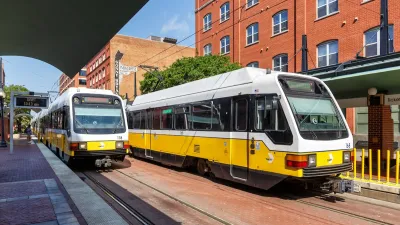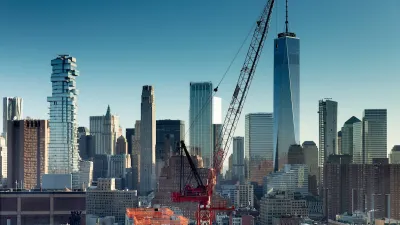In an urbanizing world, density is being recognized for its ability to stimulate the "metabolism of daily life." In an essay for The Wall Street Journal, Richard Florida argues that all density is not created equal, however.
According to Florida, "researchers at the Santa Fe Institute have been able to demonstrate that
bigger, denser cities literally speed up the metabolism of daily life....Doubling a
city's population, the Santa Fe researchers found, more than doubles its
creative and economic output, a phenomenon known as 'superlinear
scaling.'"
So how should cities stimulate density? By building up, of course.
Not so fast, says Florida. The means to achieve density are more important than the ends, he argues. Take Shanghai for example, where densities can approach 125,000 people per square mile, but whose output of innovation and creativity, "pales in comparison to New York, London, Paris and Milan." The cause for this discrepancy, Florida writes, is that, "what matters most for a city's metabolism-and,
ultimately, for its economic growth-isn't density itself but how much
people mix with each other."
And this mixing, what Peter Gordon of the University of Southern California and Sanford Ikeda of the State University of New York, Purchase call "Jacobs density", is the key to understanding the sociological component to how density works. This type of density, in contrast to what Gordon and Ikeda term the "crude" density of tall buildings, is what "sparks street-level interaction and maximizes the 'potential informal contact of the average person in a given public
space at any given time.' It makes networking and informal encounters
more likely and also creates a demand for local products and
diversity-not just of populations and ethnic groups but of tastes and
preferences."
FULL STORY: For Creative Cities, the Sky Has Its Limit

Alabama: Trump Terminates Settlements for Black Communities Harmed By Raw Sewage
Trump deemed the landmark civil rights agreement “illegal DEI and environmental justice policy.”

Planetizen Federal Action Tracker
A weekly monitor of how Trump’s orders and actions are impacting planners and planning in America.

The 120 Year Old Tiny Home Villages That Sheltered San Francisco’s Earthquake Refugees
More than a century ago, San Francisco mobilized to house thousands of residents displaced by the 1906 earthquake. Could their strategy offer a model for the present?

Ken Jennings Launches Transit Web Series
The Jeopardy champ wants you to ride public transit.

BLM To Rescind Public Lands Rule
The change will downgrade conservation, once again putting federal land at risk for mining and other extractive uses.

Indy Neighborhood Group Builds Temporary Multi-Use Path
Community members, aided in part by funding from the city, repurposed a vehicle lane to create a protected bike and pedestrian path for the summer season.
Urban Design for Planners 1: Software Tools
This six-course series explores essential urban design concepts using open source software and equips planners with the tools they need to participate fully in the urban design process.
Planning for Universal Design
Learn the tools for implementing Universal Design in planning regulations.
Clanton & Associates, Inc.
Jessamine County Fiscal Court
Institute for Housing and Urban Development Studies (IHS)
City of Grandview
Harvard GSD Executive Education
Toledo-Lucas County Plan Commissions
Salt Lake City
NYU Wagner Graduate School of Public Service





























